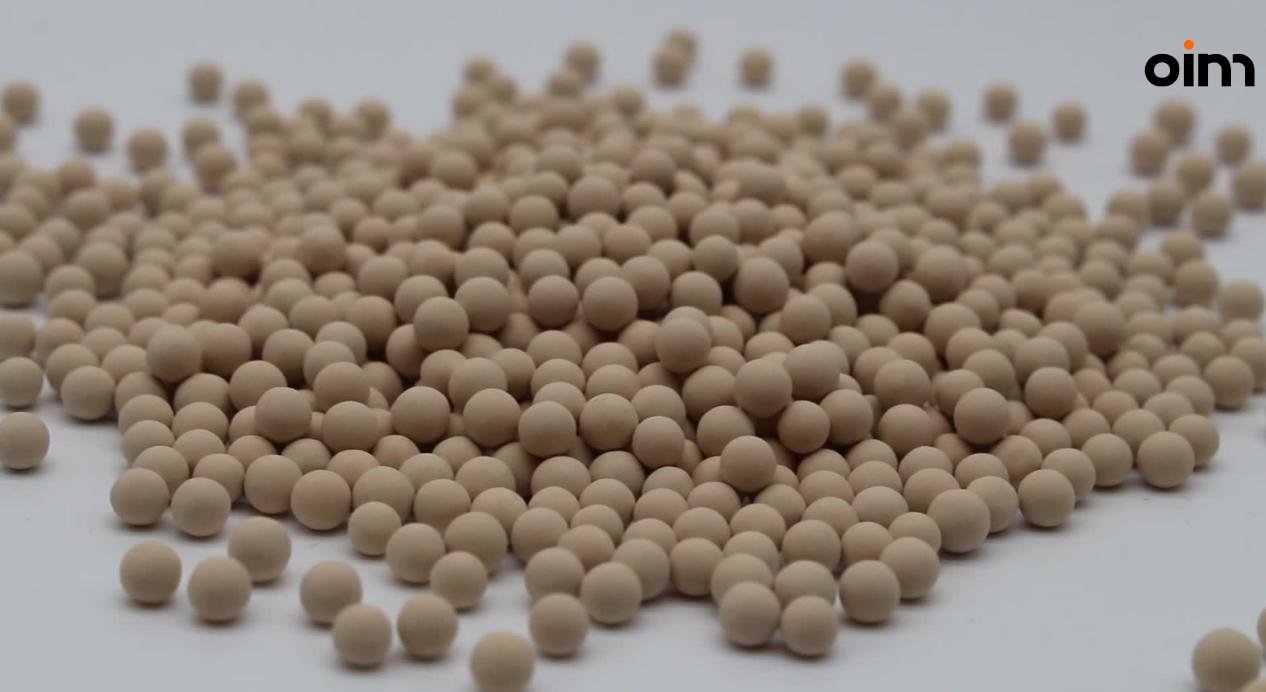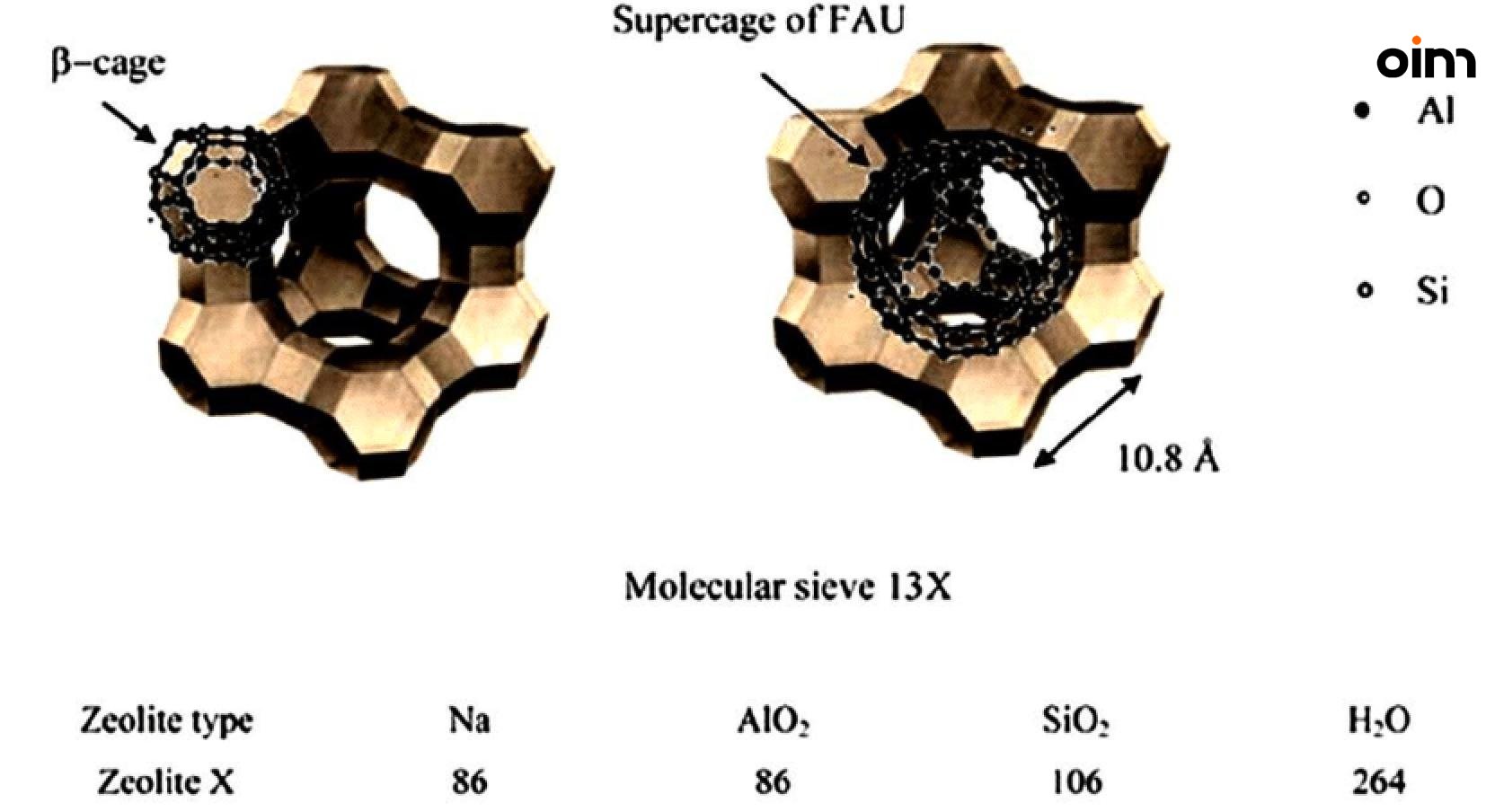Definition and main characteristics of molecular sieves
2022-09-24
Molecular sieves are materials that contain precise and single tiny pores that can be used to adsorb gases or liquids. Small enough molecules can be adsorbed through the pores, while larger molecules cannot. Unlike an ordinary sieve, it operates at the molecular level. For example, a molecule of water that is small enough to pass through, but a little larger than that, will not. Therefore, molecular sieves are often used as desiccants. A molecular sieve can absorb up to 22% of its own weight in water. Molecular sieves are often used in the petroleum industry, especially to purify gases. For example, silica gel can be used to adsorb mercury in natural gas to corrode aluminum pipelines and other liquefaction equipment.
Molecular sieve has good adsorption capacity because it contains a large number of micropores with uniform diameter; and the selectivity is very strong; molecules whose molecular diameter is smaller than the molecular sieve micropores are adsorbed; molecules whose molecular diameter is larger than the micropores are not adsorbed; this way to realize the purification and separation of mixed gas; for molecules with the same diameter that can be adsorbed, the stronger the polarity, the easier it is to be adsorbed by molecular sieve; the higher the pressure, the stronger the molecular sieve adsorption capacity; the higher the temperature, the lower the molecular sieve adsorption capacity .
Molecular sieves can withstand short-term high temperatures of 600-700°C, but the regeneration temperature is generally below 350°C. Molecular sieves can be used in media with a pH value of 5-10; some metal cations can be exchanged in salt solutions.

Here are some of the most important and most common features of molecular sieves:
One. Basic Features
* Molecular sieve can reversibly adsorb and desorb water or various gas and liquid compounds
* Metal cations are easily exchanged
1) Select adsorption according to different molecular size and shape - molecular sieve effect
The molecular sieve crystal has a honeycomb structure, the crystal cavities and channels in the crystal communicate with each other, and the pore size is uniform and fixed (the diameter of the molecular sieve cavity is generally between 6-15 angstroms), which is comparable to the size of the usual molecules, only those diameters are compared. Only small molecules can be adsorbed by molecular sieves through zeolite pores, while molecules with large configurations cannot be adsorbed by molecular sieves because they cannot enter the zeolite pores. Silica gel, activated alumina and activated carbon have no uniform pore size, and the pore size distribution range is very wide, so they have no screening performance.
2) Selective adsorption according to molecular polarity, unsaturation and polarizability
Molecular sieves have high affinity for polar molecules and unsaturated molecules; among non-polar molecules, they have a higher selective adsorption advantage for molecules with high polarizability. In addition, molecules with lower boiling points are less likely to be adsorbed by molecular sieves.
Two. High-efficiency adsorption characteristics of molecular sieve
Molecular sieve have high affinity for H2O, NH3, H2S, CO2 and other polymer polarities, especially for water, under very harsh conditions such as low partial pressure or low concentration, high temperature (above 100°C), etc. High adsorption capacity.
1) Adsorption at low partial pressure or low concentration
When the relative humidity is 30%, the water absorption capacity of molecular sieve is higher than that of silica gel and activated alumina. As the relative humidity decreases, the superiority of molecular sieves becomes more and more significant, while silica gel and activated alumina have an increasing adsorption capacity with the increase of humidity. When the relative humidity is very low, their adsorption capacity is very small.
2) High temperature adsorption
Molecular sieves are available high temperature adsorbents. At 100℃ and 1.3 % relative humidity, molecular sieve can absorb 15% of the water by weight, which is 10 times larger than that of activated alumina under the same conditions, and 20 times larger than that of silica gel. Therefore, at higher temperatures, molecular sieves can still absorb a considerable amount of water, while activated alumina, especially silica gel, greatly loses its adsorption capacity.
3) High-speed adsorption
The adsorption rate of molecular sieve for polar molecules such as water is much higher than that of silica gel and activated alumina when the partial pressure or concentration is very low. Although the equilibrium water absorption of silica gel is higher than that of molecular sieve when the relative humidity is high, with the increase of the linear velocity of the adsorbate, the water absorption rate of silica gel is less and less efficient than that of molecular sieve.
Three. Ion-exchangeability of molecular sieve
An important property of molecular sieves is that they can perform reversible ion exchange. Through this exchange, the adsorption and catalytic properties of molecular sieves are improved, leading to a wide range of applications (such as wastewater treatment).
Four. the catalytic performance of molecular sieves
Molecular sieve crystals have a uniform pore structure with pore sizes comparable to those of ordinary molecules; they have a large surface area. And the surface polarity is very high; cations that balance the negative charge of the framework can be ion-exchanged; some catalytically active metals can also be exchanged into crystals, and then reduced to elemental states with a very high degree of dispersion; at the same time, the stability of the molecular sieve framework structure very high. These structural properties make molecular sieves not only excellent adsorbents, but also effective catalysts and catalyst carriers.


